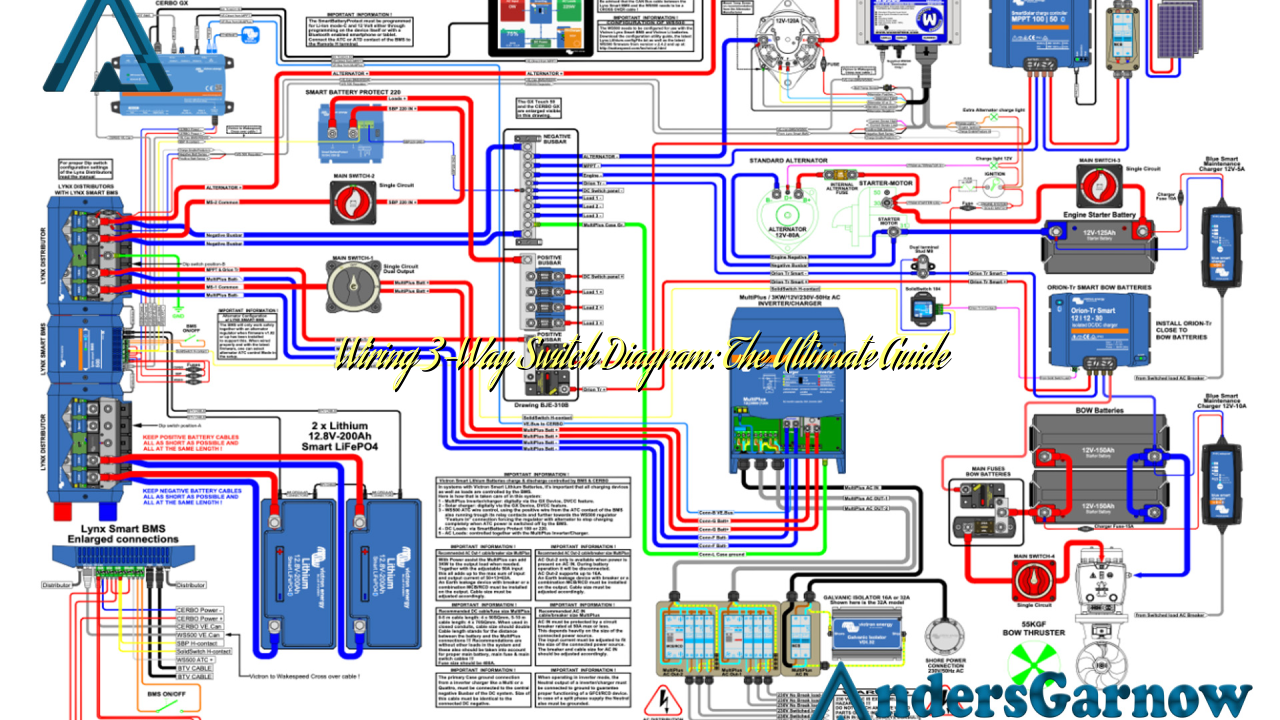Hello and welcome to our comprehensive guide on wiring 3-way switch diagrams. In this article, we will delve into the intricate details of wiring a 3-way switch and provide you with a step-by-step breakdown. Whether you are a seasoned electrician or a novice DIY enthusiast, this guide will equip you with the knowledge needed to successfully wire a 3-way switch and enhance your understanding of electrical circuits.
1. Understanding the Basics of a 3-Way Switch
Before we dive into the wiring process, let’s first grasp the fundamentals. A 3-way switch is commonly used to control a single light fixture from two different locations. It allows you to turn the light on or off from either switch, regardless of the current state. This type of switch is often found in hallways, staircases, and large rooms with multiple entry points.
One of the key features of a 3-way switch is its three terminals: the common terminal (usually black screw) and two traveler terminals (usually brass screws). The common terminal is connected to the power source, while the traveler terminals are interconnected between the two switches.
Advantages:
– Convenient control of a single light fixture from multiple locations.
– Adds flexibility and improves accessibility in large spaces.
Disadvantages:
– Requires additional wiring and components compared to a standard single-pole switch.
– Can be confusing for those unfamiliar with electrical circuits.
2. Required Tools and Materials
Now that we understand the basics, let’s gather the necessary tools and materials:
| Tools | Materials |
|---|---|
| Screwdriver (flathead and Phillips) | 3-way switches (quantity depends on the number of switches needed) |
| Wire strippers | Electrical wire (14-gauge or 12-gauge) |
| Needle-nose pliers | Wire connectors (suitable for the wire gauge) |
| Voltage tester | Electrical tape |
Make sure you have all the tools and materials readily available before you begin the wiring process to ensure a smooth installation.
3. Planning the Wiring Configuration
Before diving into the physical wiring, it’s crucial to plan the configuration. This involves identifying the location of the switches, the power source, and the light fixture. It’s recommended to sketch a diagram to visualize the wiring connections. Ensure that you have a clear understanding of how the switches will be positioned and how the wires will be routed.
4. Wiring the Power Source
The first step is to turn off the power supply at the circuit breaker. Once confirmed, remove the existing switch plate and disconnect the wiring. Connect the black wire (hot wire) from the power source to the common terminal of the first 3-way switch. Use a wire connector to secure the connection. Connect the white wire (neutral wire) to the white wires in the switch box using a wire connector. Finally, connect the bare copper wire (ground wire) to the green screw on the switch.
5. Wiring the Traveler Wires
With the power source connected, it’s time to wire the traveler terminals. Connect one end of a traveler wire to one of the brass screws on the first switch and the other end to one of the brass screws on the second switch. Repeat this process for the second traveler wire, connecting it to the remaining brass screws on both switches.
6. Wiring the Light Fixture
Now that the switches are wired, it’s time to connect the light fixture. Connect the black wire (hot wire) from the second switch’s common terminal to the black wire of the light fixture using a wire connector. Connect the white wire (neutral wire) from the light fixture to the white wires in the switch box. Finally, connect the bare copper wire (ground wire) from the light fixture to the green screw on the second switch.
7. Testing the Wiring
Before reassembling the switch plates and turning the power back on, it’s essential to test the wiring. Use a voltage tester to ensure that there is no power flowing through the wires. Double-check all connections to ensure they are secure and properly insulated with electrical tape.
8. Alternative Wiring Methods
In addition to the traditional 3-way switch wiring method, there are alternative approaches that you can consider:
– Using a wireless 3-way switch system: This eliminates the need for physical traveler wires by utilizing wireless communication between the switches.
– Installing a smart 3-way switch: These switches can be controlled remotely via smartphone apps or voice commands, offering added convenience and flexibility.
9. Frequently Asked Questions (FAQ)
Q: Can I use a regular switch instead of a 3-way switch?
A: No, a regular switch does not have the necessary terminals and wiring configuration to control a single light fixture from multiple locations. You must use a 3-way switch for this purpose.
Q: How do I identify the common terminal on a 3-way switch?
A: The common terminal is usually darker in color or labeled with the letter “C.” It is important to identify the common terminal correctly to ensure proper wiring.
Q: Can I use a 3-way switch for multiple light fixtures?
A: Yes, you can use a 3-way switch to control multiple light fixtures. However, additional wiring and appropriate circuit planning are required to accomplish this.
Conclusion
In conclusion, wiring a 3-way switch diagram may appear daunting at first, but with the right knowledge and tools, it becomes a manageable task. By understanding the basics, gathering the necessary materials, and following the step-by-step instructions, you can successfully wire a 3-way switch and enhance the functionality of your lighting system. Remember to prioritize safety at all times and consult a professional if you encounter any difficulties. Happy wiring!

